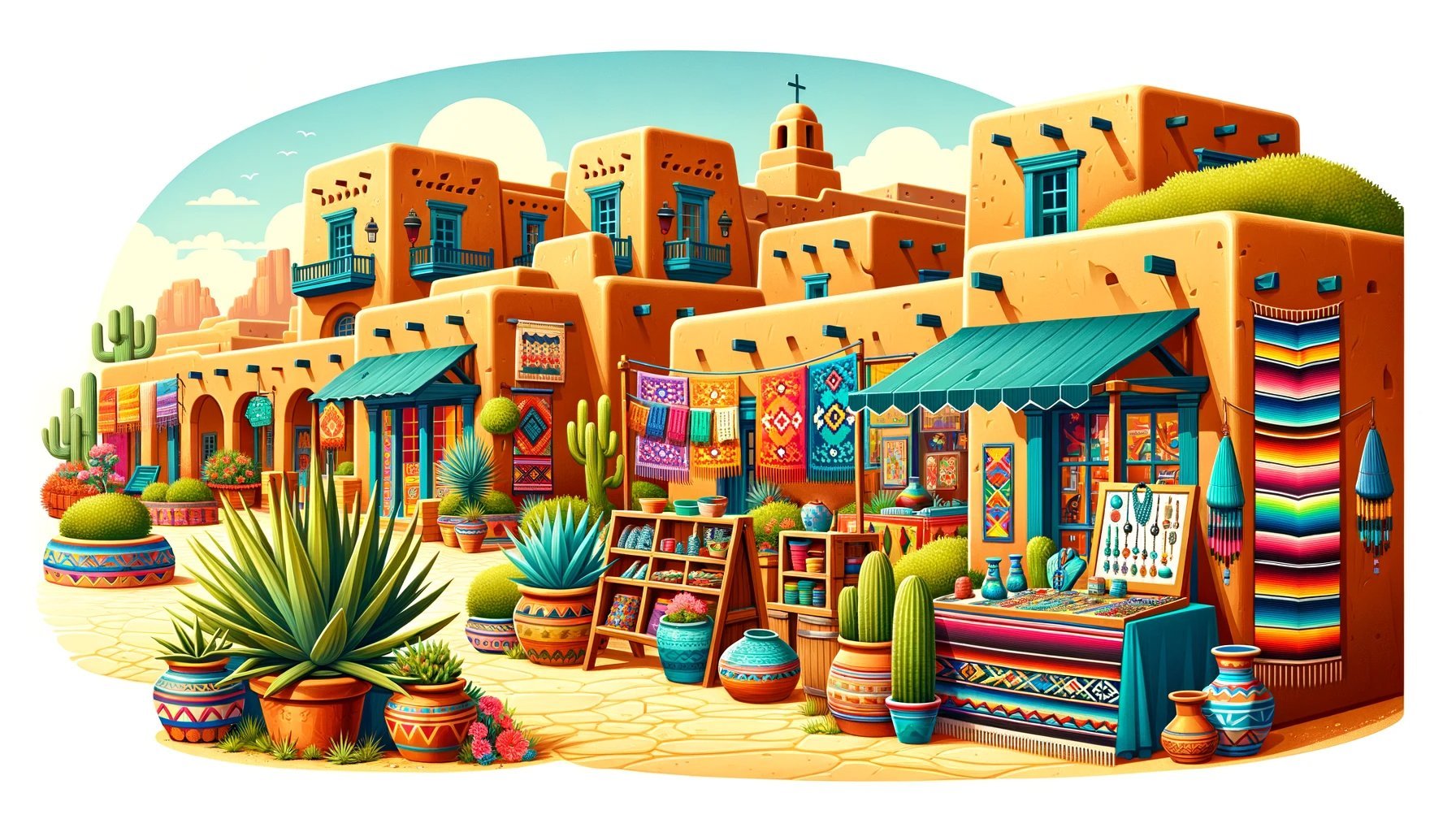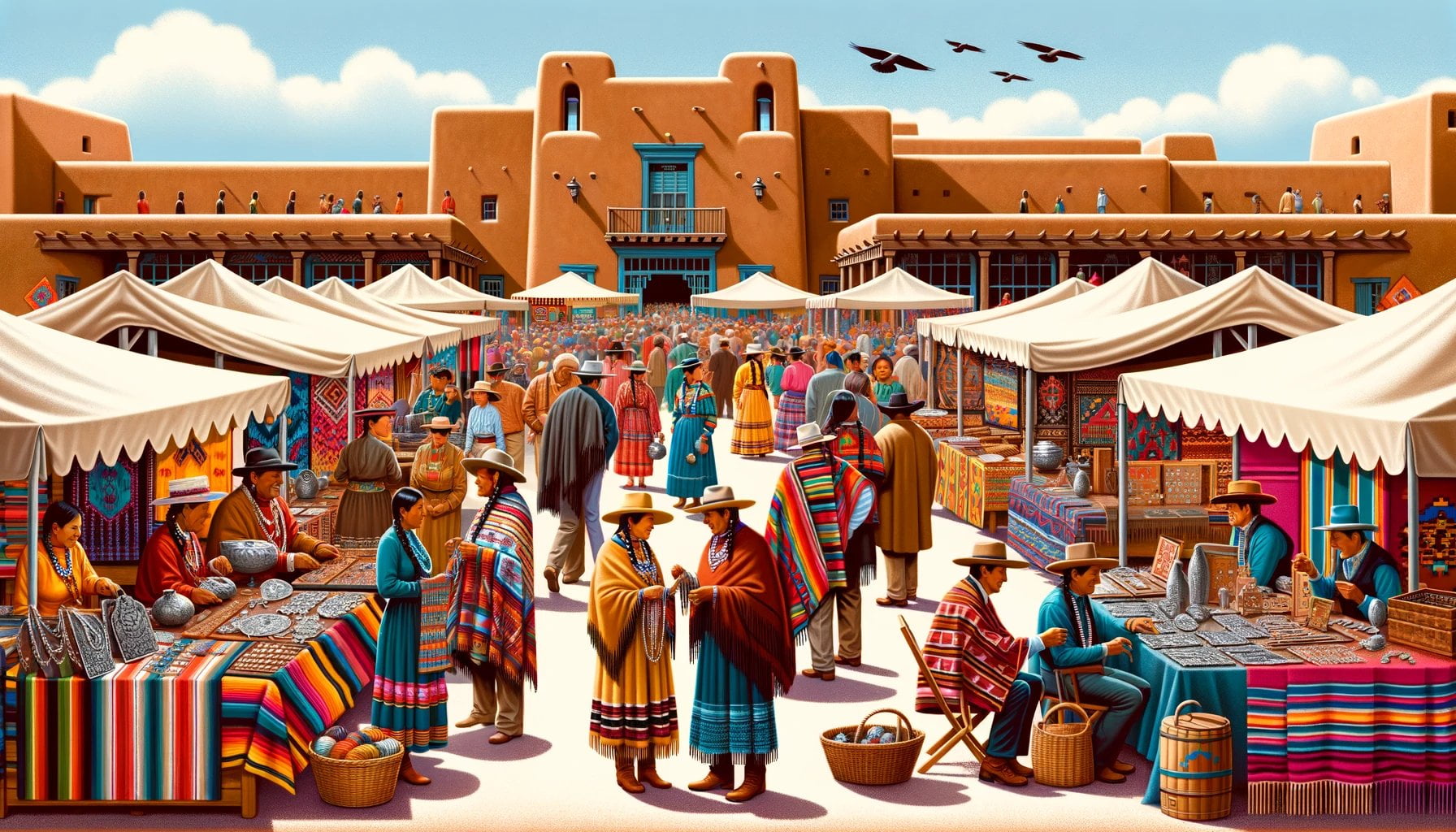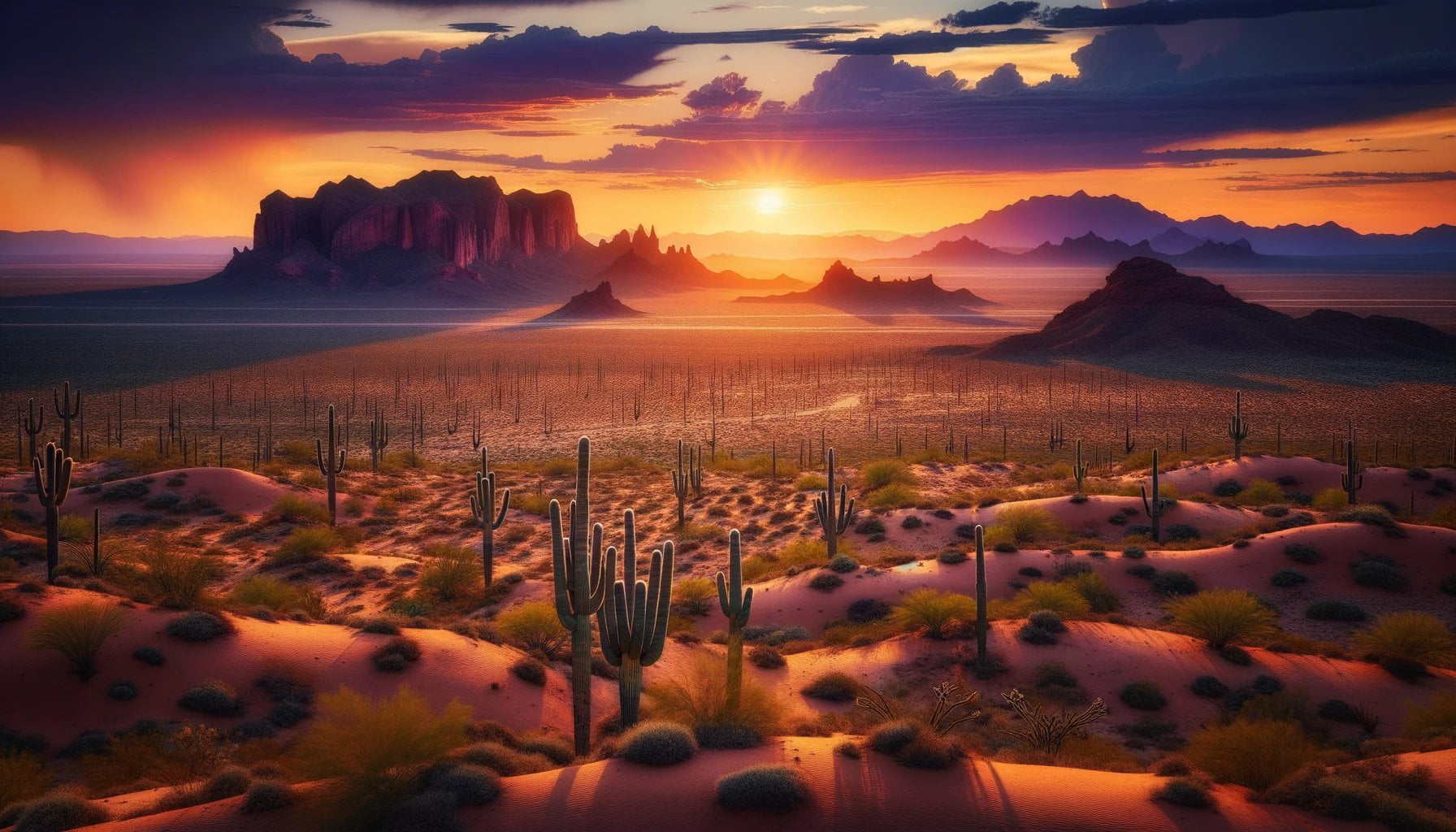Welcome to “Capturing the Essence: Exploring the Southwest’s Important Landscapes, Communities, and Heritage,” where we delve into what truly matters to the Southwest region. As a seasoned travel writer specializing in regional exploration, I bring a wealth of knowledge and a passion for all things Southwest. With a firm grasp on the history, traditions, and natural wonders of this captivating area, I aim to mesmerize readers with my ability to encapsulate its significance. From breathtaking landscapes to vibrant communities and rich heritage, join me on a journey that will ignite your wanderlust and deepen your appreciation for the timeless allure of the Southwest.

Key Takeaways:
- The Southwest region of the United States is known for its vast deserts, delicious food, the Grand Canyon, and rich culture.
- The region has a dry desert climate and is home to many national parks and monuments.
- Major cities in the Southwest include Albuquerque, Phoenix, and Tucson.
- The Southwest boasts beautiful and dramatic landscapes, such as the Grand Canyon and the red rocks of Sedona.
- The region is known for its diverse cultures, including Native American tribes, Spanish-speaking communities, and cowboy culture.
What is important to the Southwest region?
The Southwest region of the United States is a place brimming with remarkable landscapes, vibrant communities, and a rich tapestry of history and heritage. Exploring the Southwest means immersing yourself in the essence of this captivating region. So, what exactly is important to the Southwest? Let’s delve into the key elements that make the Southwest so special.
Landscapes that Take Your Breath Away
One of the most important aspects of the Southwest is its breathtaking landscapes. From the vast expanses of the desert to the iconic red rocks and majestic canyons, this region offers a visual feast for the eyes. Perhaps the crown jewel of Southwest landscapes is none other than the awe-inspiring Grand Canyon. Its sheer size and vivid colors are a testament to the power and beauty of nature. Hiking through the canyon or admiring it from one of its many viewpoints is an experience that will surely leave a lasting impression.
But the Southwest has more to offer than just the Grand Canyon. Imagine standing amidst the otherworldly hoodoos at Bryce Canyon National Park, or gazing up at the towering cliffs of Zion National Park. And let’s not forget the iconic Monument Valley, with its towering buttes and vast expanses that have made appearances in countless movies. Each of these landscapes tells a unique story and holds a special place in the heart of the Southwest.
Communities That Embrace Tradition and Diversity
Another essential aspect of the Southwest is its vibrant communities. From Albuquerque to Phoenix to Tucson, the cities of the Southwest are melting pots of cultures and traditions. Native American tribes, Spanish-speaking communities, and cowboy culture all converge in this region, creating a rich tapestry of diversity. Exploring the Southwest’s cities means immersing yourself in a world where tradition and modernity blend seamlessly.
Take a stroll through the historic districts of Santa Fe, lined with adobe buildings and art galleries that showcase the Southwest’s love for creativity. Attend a powwow on one of the Native American reservations, where dances and rituals are passed down through generations. Or savor the flavors of the Southwest in Phoenix, where you can indulge in delicious Mexican cuisine or visit one of the many farmers markets showcasing local produce. The Southwest’s communities are the heartbeat of the region, each contributing their unique traditions and cultural heritage.
Preserving Rich Heritage in a Modern World
Preserving the rich heritage of the Southwest is crucial to its identity. The region has a long history that dates back thousands of years, with a legacy shaped by Native American civilizations, Spanish explorers, and pioneers. Understanding and appreciating this heritage is important for fostering a deep connection to the Southwest.
Visiting the ancient cliff dwellings at Mesa Verde National Park or exploring the ruins of Chaco Canyon allows us to step back in time and witness the marvels of these ancient civilizations. These archaeological sites provide a glimpse into the ingenious building techniques and cultural practices of the Southwest’s ancestors.
Additionally, the Southwest is home to countless museums and cultural centers that celebrate its diverse heritage. From the National Hispanic Cultural Center in Albuquerque to the Heard Museum in Phoenix, these institutions showcase art, artifacts, and stories that span generations.
Conclusion
The Southwest region is a treasure trove of natural wonders, vibrant communities, and rich heritage. Its landscapes inspire awe, its communities embrace diversity, and its heritage tells a story that spans millennia. Exploring the Southwest is an invitation to connect with this unique corner of the world and discover the harmonious blend of tradition and progress that defines the region. So, pack your bags, embark on an adventure, and let the Southwest captivate your senses with its timeless allure.
Here are some fascinating facts about the Southwest region that you might not know. Want to dive deeper into the rich history? Check out these 4 facts about the Southwest region.
4 facts about the Southwest region
Curious about the age of the Southwest region? Uncover the answer and learn more about its fascinating timeline by clicking here.
How old is the Southwest region?
Discover the vibrant cultural tapestry that defines the Southwest region. Find out more about the main culture that permeates this diverse region by clicking below.
What is the main culture in the Southwest region?
The Vibrant Cultural Communities: Exploring the Rich Heritage of the American Southwest
The Southwest region of the United States is famed for its remarkable landscapes, vibrant communities, and rich history and heritage. However, its cultural communities hold a particular allure, showcasing a tapestry of traditions, languages, and customs that make the Southwest truly unique. In this article, we will delve into the vibrant cultural communities that contribute to the Southwest’s rich heritage.
Spanish and Mexican Influences: Shaping the Southwest’s Identity
One of the most distinct aspects of the Southwest’s cultural fabric is its strong Spanish and Mexican heritage. Once part of Mexico, the region still bears the influence of its past. From the adobe structures and pueblo-style homes that dot the landscape to the mouthwatering culinary delights like tacos, enchiladas, and green chile stew, the Southwest’s Spanish and Mexican roots permeate everyday life.
Native American Tribes: Guardians of Southwest Traditions
Delving into the cultural communities of the Southwest also means exploring its deep Native American history. The region was originally inhabited by various Native American tribes, including the Apache, Comanche, and Pueblo. Their rich cultural contributions are still evident today, from the captivating artwork displayed in museums to the tribal lands and historical sites, offering a glimpse into the past.
Southwest Tribes: Unique Traditions and Cultural Practices
Within the Southwest, diverse Native American tribes exist, collectively referred to as the Southwest tribes. Each tribe, such as the Navajo, Apache, and Hopi, has its own unique traditions and practices that have been passed down through generations. Visitors to the region have the opportunity to engage with these communities, learning about their customs and gaining a deeper appreciation for their rich cultural heritage.
Experiencing the Southwest’s Cultural Heritage
For those with a yearning to explore the Southwest’s history and culture, a wealth of attractions awaits. Ruins from ancient civilizations, vibrant museums, and art galleries all provide insights into the region’s cultural past. Moreover, exploring iconic national parks like the Grand Canyon, Arches National Park, Big Bend National Park, and Carlsbad Caverns allows visitors to discover the Southwest’s rugged beauty while immersing themselves in its cultural narrative.
Key Takeaways:
- The Southwest region’s cultural diversity is characterized by its strong Spanish and Mexican influences, with adobe architecture, pueblo-style homes, and delicious cuisine.
- Native American tribes, including the Apache, Comanche, and Pueblo, have made significant contributions to the Southwest’s cultural landscape.
- The Southwest tribes, such as the Navajo, Apache, and Hopi, have distinctive traditions and practices that offer visitors a unique glimpse into their rich heritage.
- Ruins, museums, and art galleries provide opportunities to explore the Southwest’s history and cultural identity.
- Exploring national parks like the Grand Canyon and Arches National Park allows visitors to appreciate the Southwest’s natural beauty alongside its cultural significance.
Sources:
- Encyclopedia of Facts. “Southwest Region Culture Facts.” Link
- U.S. National Park Service. “Cultural Definitions of the Southwest.” Link
The Historical Significance of the Southwest: Unveiling the Stories of the Land
Key Takeaways:
– The Southwest region of the United States has a rich historical heritage, dating back to the Spanish settlement in the 1500s and the acquisition of land by the United States in the 19th century.
– The Southwest region includes Arizona, Colorado, Nevada, New Mexico, and Utah, and is known for its warm climate and diverse landscapes, such as deserts, canyons, and pine forests.
– The Southwest’s cultural diversity is influenced by its Spanish and Native American roots, with traditions and practices that are still celebrated today.
– Exploring national parks such as the Grand Canyon and Zion National Park allows visitors to appreciate both the natural beauty and cultural significance of the Southwest.
In the vast expanse of the Southwest, a tapestry of history unfolds in every landscape, community, and heritage site. The region’s historical significance echoes through time, telling the stories of the Spanish settlers, Native American tribes, and the progression of the United States. Let’s embark on a journey to uncover the deep-rooted history that defines the Southwest.
Echoes of the Past: Tracing the Southwest’s Historical Timeline
Step into the Southwest, and you step into a time capsule. The first settlers arrived in the Southwest in the 1500s, leaving an indelible mark on the region’s history. Spanish influence seeped into the land, as settlers raised sheep, cattle, and horses, shaping the landscape and cultural practices that still persist today. As the United States expanded its territories, the Southwest became a pivotal region after the War of 1812, leading to the acquisition of land and the blending of different cultures.
A Cultural Melting Pot: Understanding the Southwest’s Diverse Heritage
The Southwest is an exquisite blend of cultures, fervently woven together to create a rich tapestry. From the colorful adobe structures to the aroma of traditional cuisine, the Southwest embraces its Spanish and Native American heritage with pride. As you explore the vibrant cities of the Southwest—like Albuquerque, Phoenix, and Tucson—you’ll witness the convergence of Native American, Spanish-speaking, and cowboy cultures. Each community tells a different story, and within their historic districts, the legacy of the Southwest’s diverse heritage is on vivid display.
Guardians of Tradition: Celebrating the Southwest’s Native American Legacy
Deeply rooted in the land, the Native American tribes have shaped the Southwest’s identity since ancient times. Their traditions, rituals, and practices date back over 10,000 years, leaving behind a profound cultural heritage. From the powerful Navajo Nation to the resilient Apache and Hopi tribes, the Southwest’s tribes have preserved their culture and traditions. Engaging with indigenous communities offers a gateway to a world filled with captivating artwork, historical sites, and the opportunity to learn from generations of wisdom.
Unveiling the Natural and Cultural Treasures: Exploring the Southwest’s National Parks
Nature and history converge in the Southwest’s renowned national parks. The breathtaking landscapes, such as the monumental Grand Canyon, the awe-inspiring Zion National Park, and the ethereal Bryce Canyon National Park, take visitors on a journey through time and space. As you traverse the trails, the historical significance of the land reveals itself, inviting you to reflect on the ancient civilizations that once thrived in these rugged terrains. These national parks are not merely majestic backdrops; they are living testaments to the region’s historical importance.
Explore the Southwest, and you will witness the collision of ancient traditions, centuries-old landmarks, and captivating landscapes. Immerse yourself in the historical significance of the region, let the stories of the past unfold before your eyes, and become a part of the Southwest’s timeless allure.
Sources:
- Encyclopedia Britannica. (n.d.). Southwest Region. Link.
- Encyclopedia of Facts. (n.d.). The Southwest Region Facts. Link.
The Economic Importance of Tourism in Regional Development
Tourism plays a vital role in regional development and has a significant impact on the economy. This is particularly true in Southwest China, a region known for its abundant tourism resources. The tourism economy has become a major driver of economic growth in this area (ResearchGate).
The development of tourism not only contributes to economic growth but also plays a crucial role in promoting the harmonious development between tourism and the ecological environment (ResearchGate). It is an essential component of the 21st-century economy and actively contributes to the development and modernization of society (ResearchGate).
One of the key benefits of tourism is its positive effects on regional development. It brings about economic, social, and political development in the region (ResearchGate). By accelerating the multi-faceted development of a region, tourism potential creates a positive ripple effect across various sectors (ResearchGate).
The importance of geological tourism resources should not be overlooked either. These resources significantly influence regional economic development and serve as an important pathway for sustainable development (ResearchGate).
According to the UN World Economic Situation and Prospects report, tourism holds significant importance for national economies and individual livelihoods (UNWTO). The report emphasizes the impact of the pandemic on the tourism sector and uses UNWTO data on international tourist arrivals and tourism receipts to illustrate its importance (UNWTO).
From an economic standpoint, tourism is a crucial sector with a global share exceeding 10% (Springer). It generates income, creates employment opportunities, and contributes to overall economic growth (Springer). The economic contribution of tourism can be measured by monitoring Tourism Direct GDP as a proportion of total GDP (UNWTO).
Taking a closer look at the socio-economic impact, employment multipliers within the tourism sector have shown a substantial decrease, indicating the magnitude of its influence on employment (Taylor & Francis Online).
However, there is still a gap in understanding the relationship between regional development policies and tourism development (SAGE Journals). This literature review highlights the need for a better understanding of this connection to ensure balanced development (SAGE Journals).
It is also essential to consider the significance of rural tourism in community development. Rural tourism contributes to the economic, sociocultural, environmental, and leisure aspects of rural communities (Nature). By creating employment opportunities and boosting the economy, it brings numerous benefits to local communities (Nature).
In conclusion, the economic importance of tourism cannot be overstated. It serves as a catalyst for regional development, promotes economic growth, and creates employment opportunities. Southwest China is a prime example of how tourism drives economic growth. However, the COVID-19 pandemic has shed light on the vulnerability of the tourism industry and the need for sustainable development in this sector.
Key Takeaways:
- Tourism plays a significant role in regional development and economic growth, particularly in Southwest China (ResearchGate).
- It has a positive impact on economic, social, and political development in the region (ResearchGate).
- Geological tourism resources have a substantial influence on regional economic development (ResearchGate).
- Tourism is essential for national economies and individual livelihoods, as emphasized by the UN World Economic Situation and Prospects report (UNWTO).
- The tourism industry generates income, creates employment opportunities, and contributes to economic growth (Springer).
- The socio-economic impact of tourism can be witnessed through employment multipliers in the tourism sector (Taylor & Francis Online).
- There is a need to better understand the relationship between regional development policies and tourism development for more balanced development (SAGE Journals).
- Rural tourism contributes significantly to rural community development, benefiting the economy and sociocultural aspects (Nature).
Sources:
– Role of Tourism in Regional Development and Its Effects on Economy: ResearchGate
– UN report Underscores Importance of Tourism for Economic: UNWTO

FAQ
Q1: What are some of the important landscapes in the Southwest region?
A1: The Southwest region is known for its diverse and beautiful landscapes, including the Grand Canyon, the red rocks of Sedona, and the desert landscapes of Arizona and Nevada.
Q2: What role do communities play in the Southwest region?
A2: Communities in the Southwest region have a rich cultural heritage and value hospitality, family, and community. They contribute to the vibrant blend of cultures found in the Southwest.
Q3: What is the significance of Native American tribes in the Southwest?
A3: Native American tribes have a deep cultural history in the Southwest region. They have influenced the artwork, museums, tribal lands, and historical sites, preserving their traditions and contributing to the region’s rich cultural heritage.
Q4: How has the Spanish and Mexican heritage impacted the Southwest region?
A4: The Southwest region was once part of Mexico and has a strong Spanish and Mexican heritage. This influence is evident in the architecture, food, and overall culture of the region, adding to its diverse and unique character.
Q5: What are some iconic national parks in the Southwest region?
A5: The Southwest region is home to several iconic national parks, including the Grand Canyon, Arches National Park, Bryce Canyon National Park, and Zion National Park. These parks showcase the region’s natural beauty and offer opportunities for outdoor exploration and adventure.















